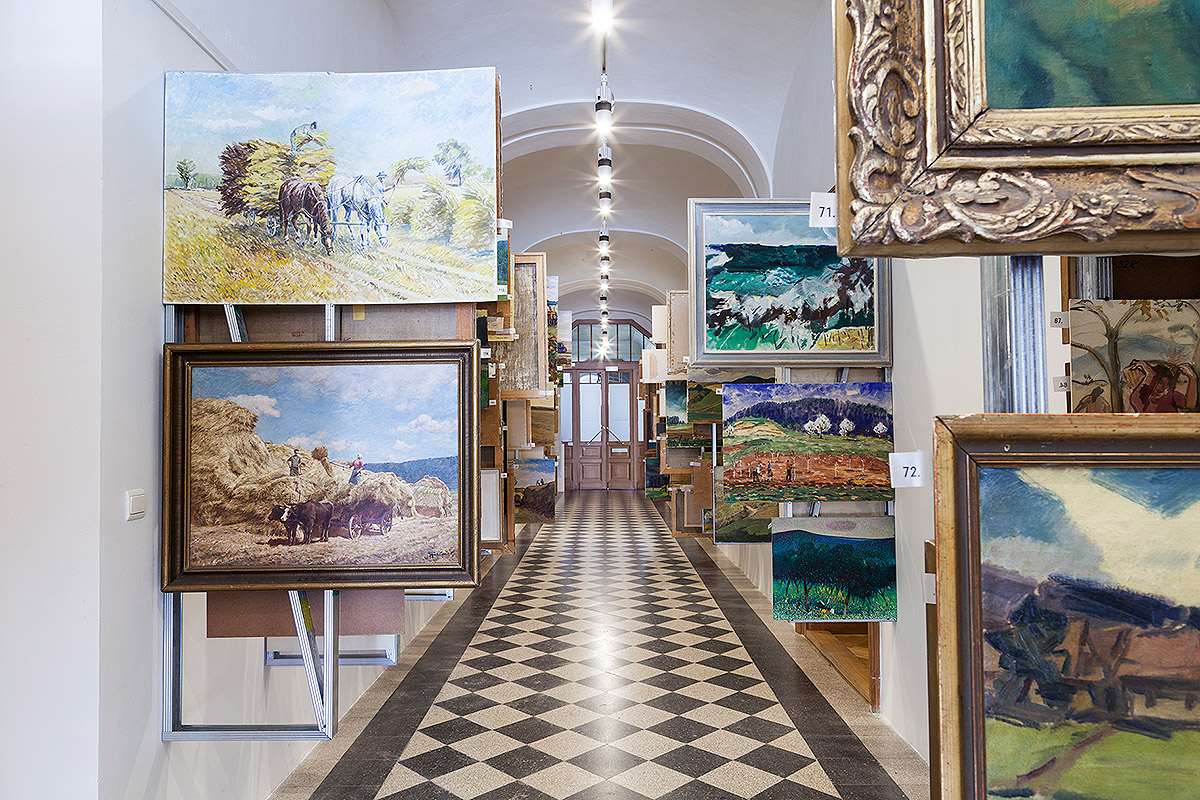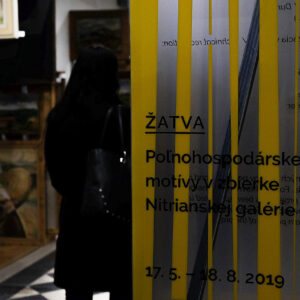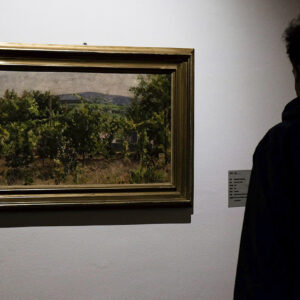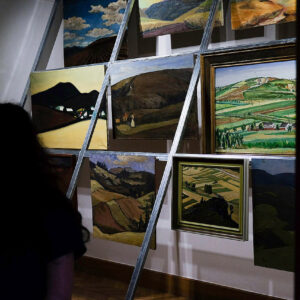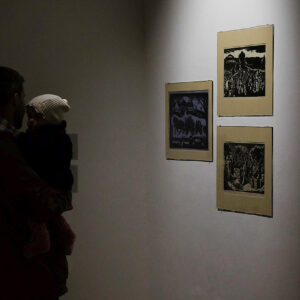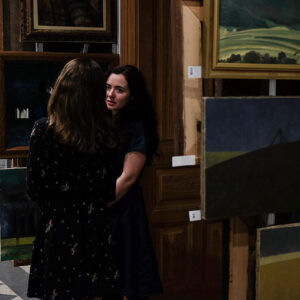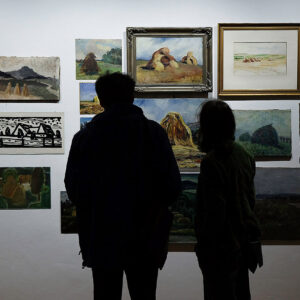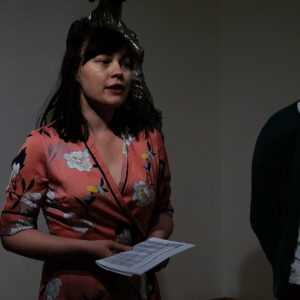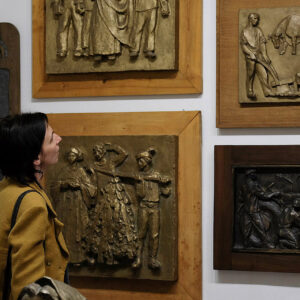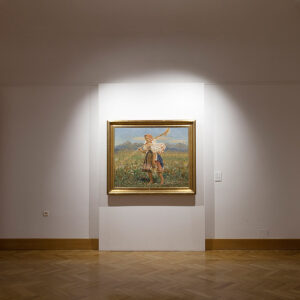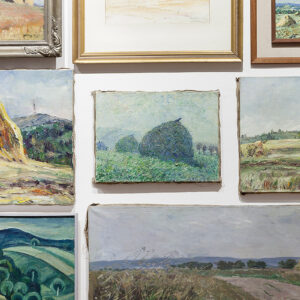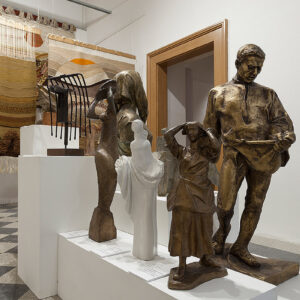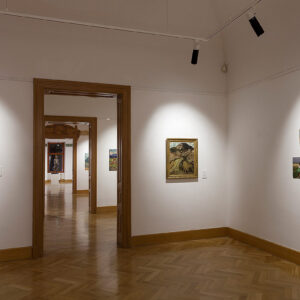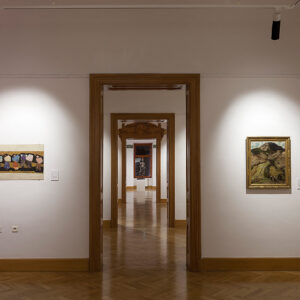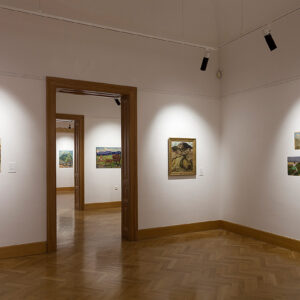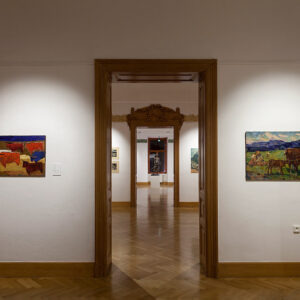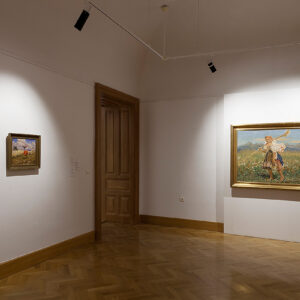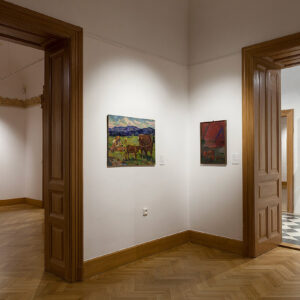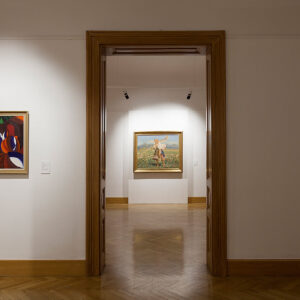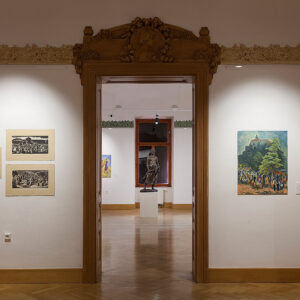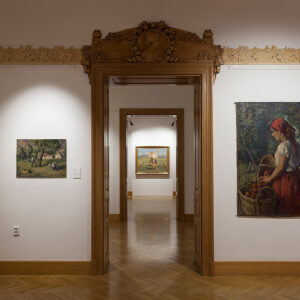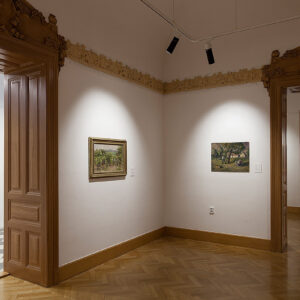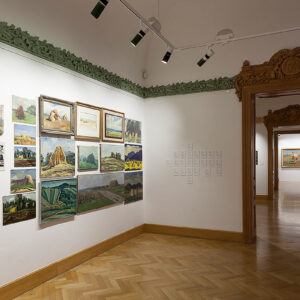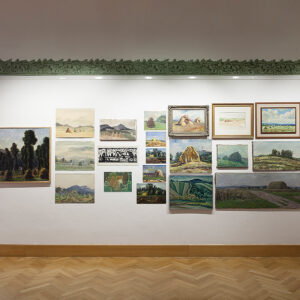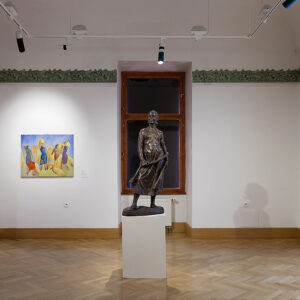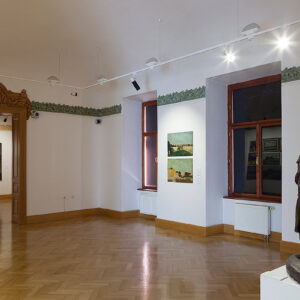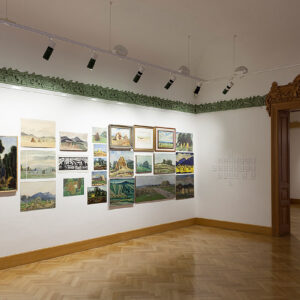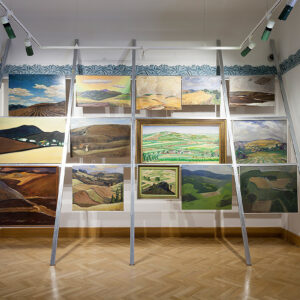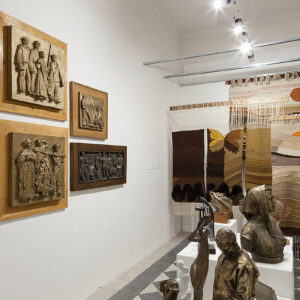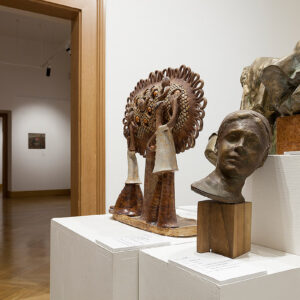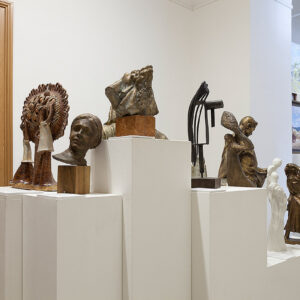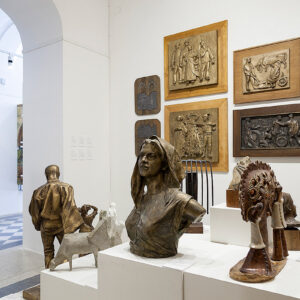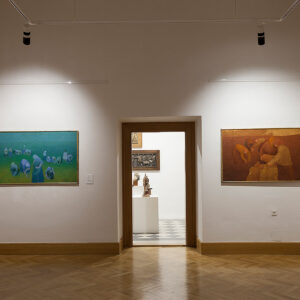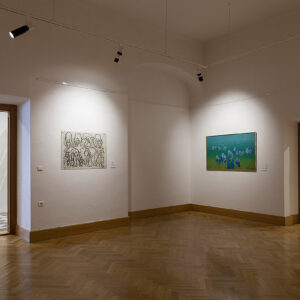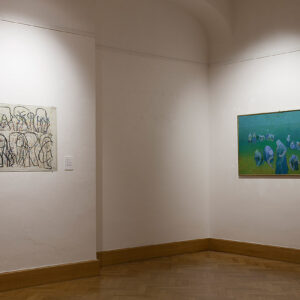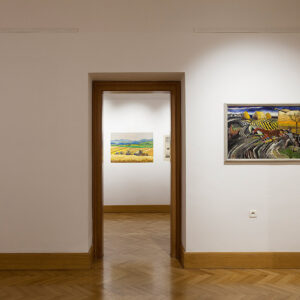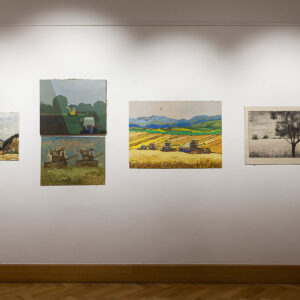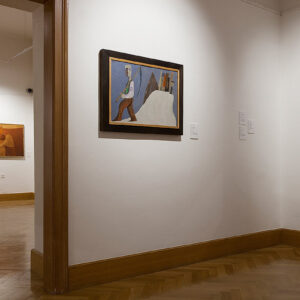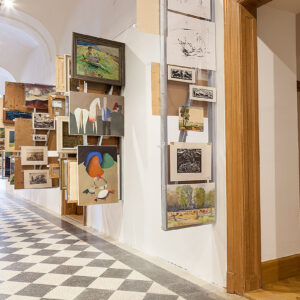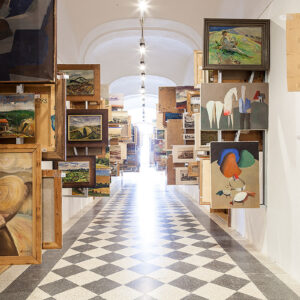Information
Curator
Mária Janušová
Design and Architecture
Peter Liška
Opening
Thursday, 16 May 2019, 6pm
Duration
17 May – 18 August 2019
Venue
Representative Halls
Download
Funding
With financial support of the Slovak Arts Council public funds. The Council is the leading partner of the project.
These pieces create a large part of the gallery’s collection which was accumulated between 1965–1989, i.e. between the foundation of the institution and the fall of the communist regime. The power of the totalitarian regime made Nitra the centre of Slovak agricultural life which was reflected in the region’s large-scale plant and animal production, but also in arts and science. It gave birth to many specialised secondary schools, agricultural training institutions, the Slovak University of Agriculture or the Agrokomplex convention centre. People of the region were also reminded of its agricultural focus on everyday basis thanks to various visual public-space artworks as well as agriculture-themed interior sculptures, reliefs, mosaics and wall paintings installed at various institutions.
The regime’s ideological power was also reflected in Nitra Gallery and its acquisition policy which preferred purchasing artworks with agricultural motives. The best evidence of the gallery’s pronounced acquisition policy is the enormous quantity of such pieces in its collection which also preferred quantity over quality. Many of the pieces feature almost identical imagery presented in the form of artistic variations of the same image which might also include early sketches or casts.
The focal point of this specific part of the collection are artworks that belong to the official art doctrine of the period called socialist realism whose central themes were agriculture and simple rural life. However, the art of socialist realism never had a uniform character. As there were no clearly defined guidelines to follow, especially in our part of the world – further west of Moscow – it contained various specific and unique features. These can be found in the presented artworks of the gallery’s collection which contain both strong ideological tendencies of mediocre quality and creative approaches with original and unique handwriting. It demonstrates the problematic, black and white division of the art scene into the official and alternative ones. It is especially true in the case of famous names of the Slovak history of art who were sometimes forced to produce officially sanctioned pieces in order to make a living as it was a way to quickly monetise their work.
The collection of agricultural themes also contains several pieces from the period of Slovak modernism of the first half of the 20th century, so the exhibition showcases artists like Martin Benka, Miloš Alexander Bazovský, Ján Hála, Jozef Theodor Mousson or Maximilián Schurmann.
The concept of the Nitra Gallery’s exhibition is supposed resemble an archive which is implied by its structural division in the central hallway. The symbolism of a gallery depository full of artworks points to the obsessive attention to its acquisition policy. While some of the aisles make a use of a packed installation, the individual exhibition rooms, on the other hand, feature a more intimate atmosphere which highlights some of the original and unique features of the selected artworks. The presented items are divided into several groups based on the motives of reference. Each group then contains various artistic approaches towards the scene captured in each of the given images.
The goal of the project is to work with its own collection and find a way how to implement it into its current program and operations. Even though it has been 30 years since the fall of the totalitarian regime, its remains and heritage is something people often have a hard time dealing with. In this respect, “The Harvest” exhibition is an attempt of the institution to self-criticize and to reflect upon one of its key roles – its collection-creating activities.
